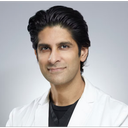A person’s age is best guessed by the appearance of their face. If you feel that your face does not reflect how young you feel inside, you may be a candidate for a facelift.During your #consultation, your skin texture and elasticity, as well as your underlying skin structure and your facial bone structure will be evaluated. Based on this evaluation, your board certified plastic surgeons will create a custom surgical plan, detailing specific techniques and recommendations to meet your goals. In doing so, he or she should be sure to have a full understanding of what results you expect.If you are not a #candidate, your surgeon can make other suggestions to address your concerns and objectives.Patients who desire facial rejuvenation that is affordable, quick, and effective should consider the Lite-lift™. Like the Life-Style™ facelift, this is a modified facelift that can be performed in the office with a local anesthetic and improve signs of aging around the neck, jawbone and lower face. These procedures are not "Thread-lifts" or "String-lifts". We do not use the "barbed" sutures employed in these other lifting operations. The Lite-lift™ uses longer lasting techniques that are discussed below. Because the incisions are limited, there is less bruising, swelling and healing time for most patients. Many patients can be back to work in one to two weeks looking rested and more youthful.The best candidates for #LiteLift are patients 35-60 years old with early changes of the lower face and the neck. Older patients who cannot or do not wish to have a longer operation or general anesthetic can be improved with a Lite Lift™. Lite Lift™ surgery is individualized for each patient. The best candidates for Lite Lift™ surgery have a face and neck line beginning to sag, but whose skin has elasticity and whose bone structure is well defined and do not smoke.









